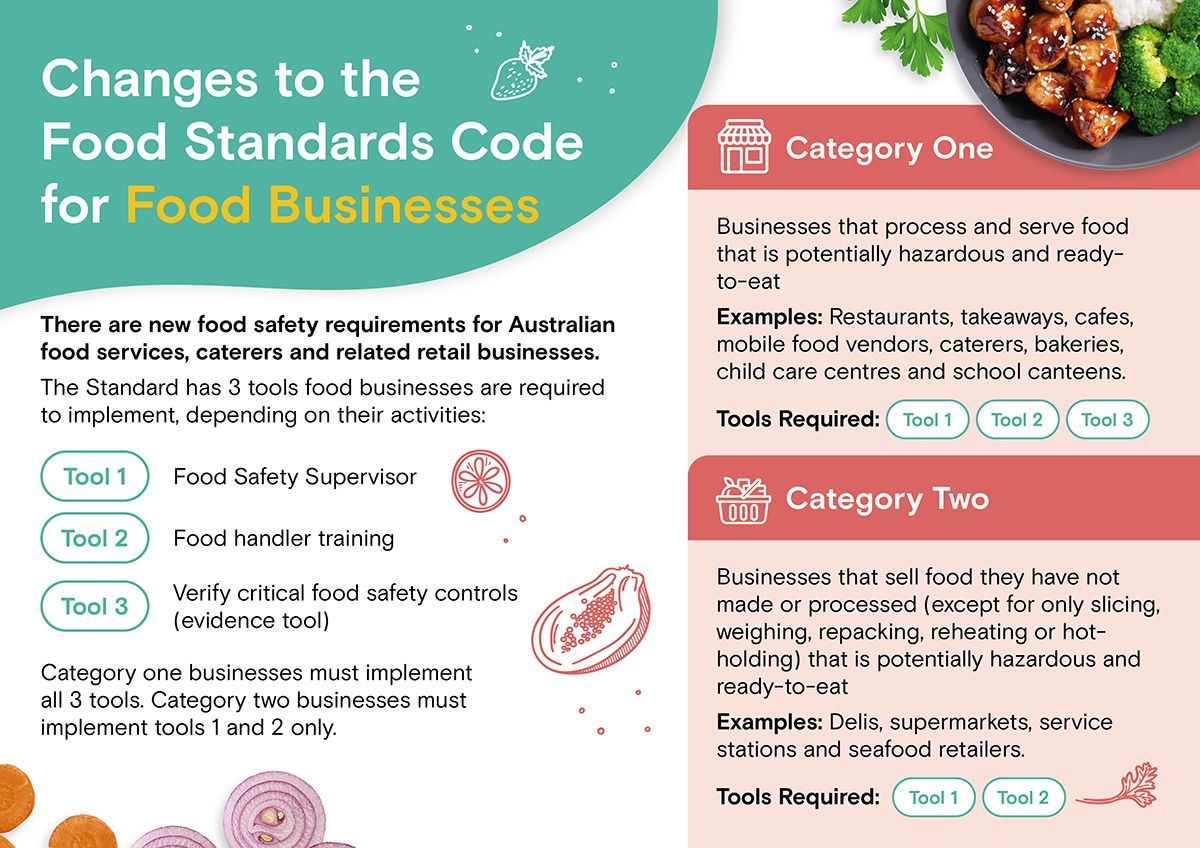Standard 3.2.2A Food Standards Code outlines the need for the following food safety management tools within a business that handless unpackaged, ready-to-eat, potentially hazardous foods.
Depending on the activities undertaken by a business and the risk posed by their food handling activities, food businesses will be required to implement 2 or 3 of the following tools:
Tool 1 - Food Safety Supervisor (FSS)
Most businesses may have in place a FSS. Qualified Food Safety Supervisor need to be reasonably available to supervise food handlers. Food Safety Supervisors (FSS) oversee day-to-day food handling operations and ensure risks are managed to prevent customers becoming ill and help businesses meet their obligations under the Food Standards Code, NSW Food Act and Food Regulation
Tool 2 - Food Handler Training
Ensure all food handlers are trained in food safety and hygiene or can demonstrate adequate skills and knowledge.
Free Basic food handler training with the new changes to the NSW Food standards Code is available online:
https://www.foodauthority.nsw.gov.au/training/food-handler-basics-training
Tool 3 - Record keeping
Keep records of important food safety information such as potentially hazardous food temperatures, cleaning and sanitising etc. In order to be able to show their food is safe food businesses can maintain records and demonstrate safe food through logs sheets, Standard Operating Procedures, written instructions, photos, electronic templates, data logger and information in a graph etc.
Which tools need to be applied?
The tools that a business needs to implement is determined by the category of a business.
Category 1:
Businesses that process and serve food that is potentially hazardous* and ready-to-eat.
*Food that has to be kept at certain temperatures to minimise or prevent the growth of disease causing microorganisms that may be present in the food or to prevent the formation of toxins in the food
Examples: Restaurants, takeaways, cafes, mobile food vendors, caterers, bakeries, child care centres and school canteens.
- Tool 1 - Have a qualified onsite Food Safety Supervisor
- Tool 2 - Ensure all food handlers are trained in food safety
- Tool 3 - Be able to show their food is safe by maintaining a record or demonstrate safe food practices. (Rules for showing safe food)
Category 2:
Businesses that sell food they have not made or processed (except for only slicing, weighing, repacking, reheating or hot-holding) that is potentially hazardous and ready to eat.
Examples: Delis, supermarkets, service stations and seafood retailers.
- Tool 1 - Have a qualified onsite Food Safety Supervisor
- Tool 2 - Ensure all food handlers are trained in food safety
Food businesses can take a short quiz to self-assess whether their business is a Category 1 or Category 2 business.
Food businesses download the information poster.
Templates
1. Suppliers List and Details 34.0 KB Download
2. Product Receival and Monitoring Record 35.1 KB Download
3. Food Temperature Record 40.7 KB Download
4. General Temperature Record 33.9 KB Download
5. Log for 2hr-4hr Rule 36.1 KB Download




